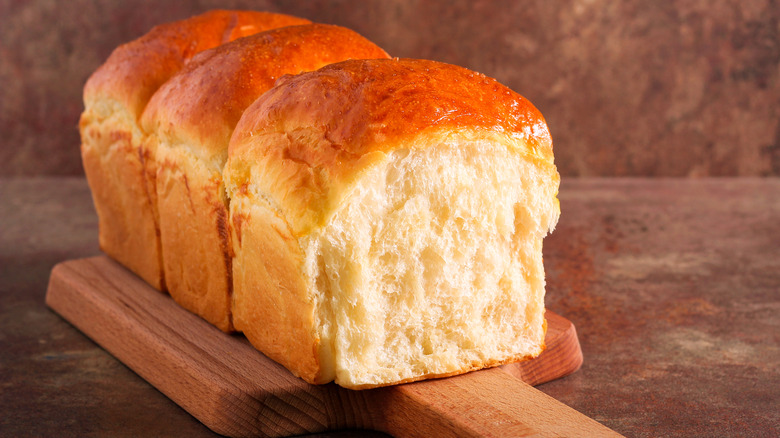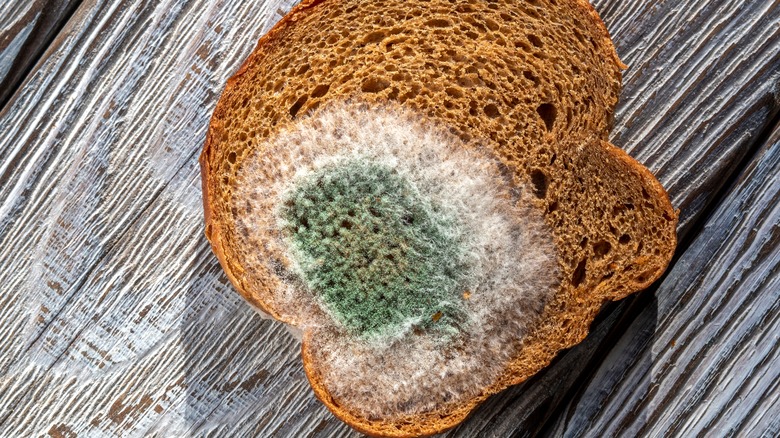How Long Can You Store Bread On The Counter Before It Goes Stale?
Counter or fridge? Paper or plastic? The ways to store bread are seemingly endless but often imperfect, resulting in a rock-hard leftover loaf or still-soft-but-moldy slices.
The Bread Guide explains that mold begins forming on bread as early as five days after baking. Bread with added preservatives fares better, but even sliced commercial bread is prone to bacteria growth, particularly if it's not stored properly. According to Sciencing, mold needs food, water, and the proper air quality and temperature to grow. A plastic bag, with its lack of airflow, creates the perfect environment for mold to thrive, particularly if the bread is stored in a warm place. Because mold spores root, removing the moldy bits doesn't make the food safe to eat.
Unfortunately, leaving the bread to stand au natural on the counter won't extend its freshness. Kitchen Myths explains that bread — even bread left unpackaged — absorbs moisture. This moisture crystalizes the starch. This chemical process turns a crusty baguette into a cement loaf. While it may be tempting to pop the loaf in the fridge to curtail bacteria growth and extend freshness, the appliance's cooler temperatures cause the starches in the bread to crystallize even faster and dry out.
Bread stored on the counter needs a box
According to The Bread Guide, to know how to store your bread properly, you need to understand its post-bake hydration level, or the amount of water left in the loaf after baking. Airy breads like focaccia have a lower hydration level after baking than a denser bread like rye or pumpernickel, which retains water throughout the baking process.
With less water, the lighter breads require less ventilation to keep the loaves fresh. Higher hydration breads, however, are better off with a little breathing room. Similarly, breads with eggs or sugar (think brioche or challah) will go moldy well before they dry out.
An old-fashioned bread box is the best option for countertop storage, reports The New York Times. This breathable box regulates humidity levels, keeping the bread from turning stale without triggering mold growth. With the proper storage, StillTasty recommends keeping pre-sliced breads on the counter for one week. Unsliced, soft crusted breads do OK for up to five days. The hard crust breads only last a day or two.
Hard crust devotees, take heart. There is a way to bring rock-hard whole loaves back to life. Food Network suggests rinsing the loaf under running water and placing it in a preheated 300-degree oven for six to 10 minutes. This method crisps the crust while steam revives the interior into a soft and chewy loaf.

